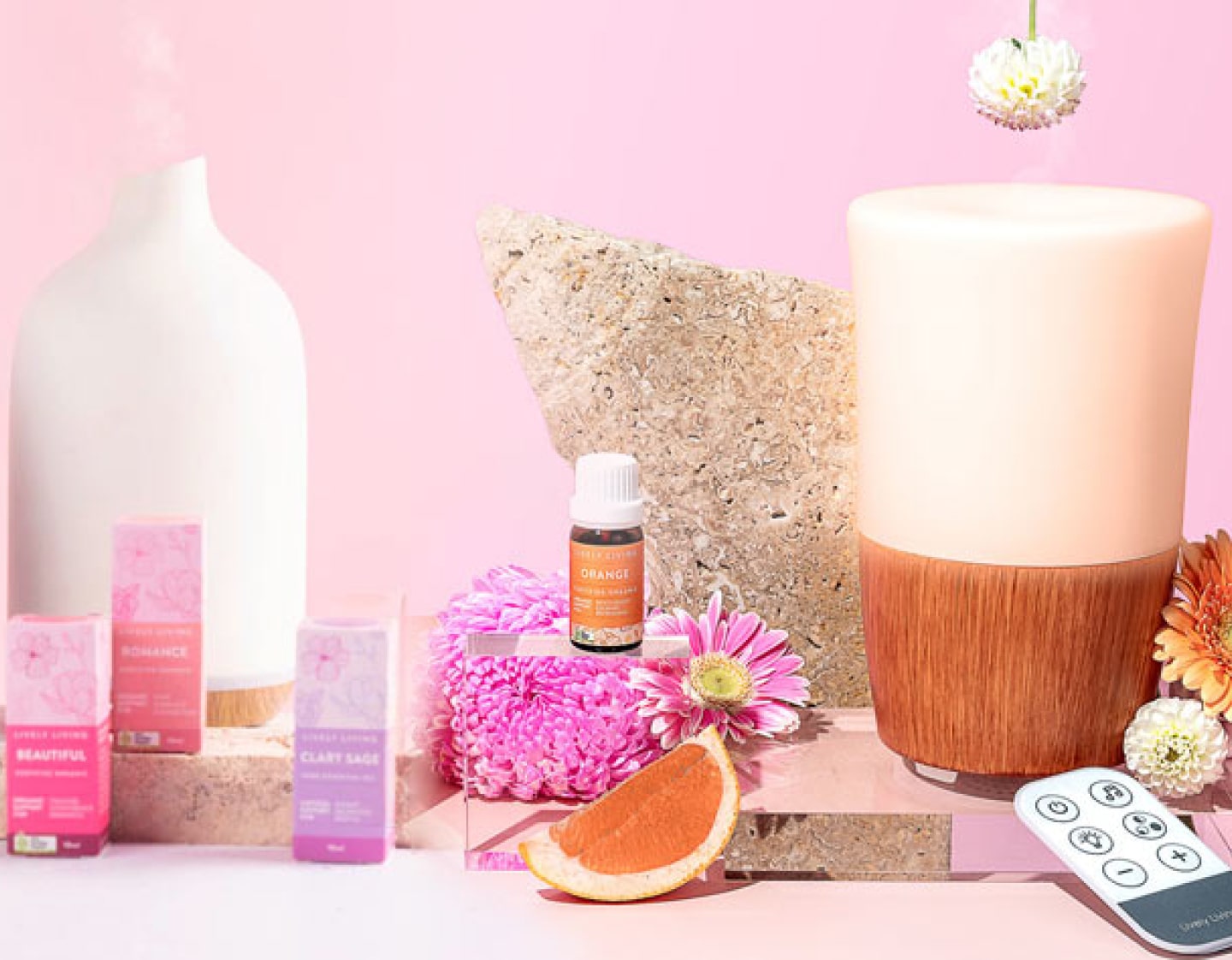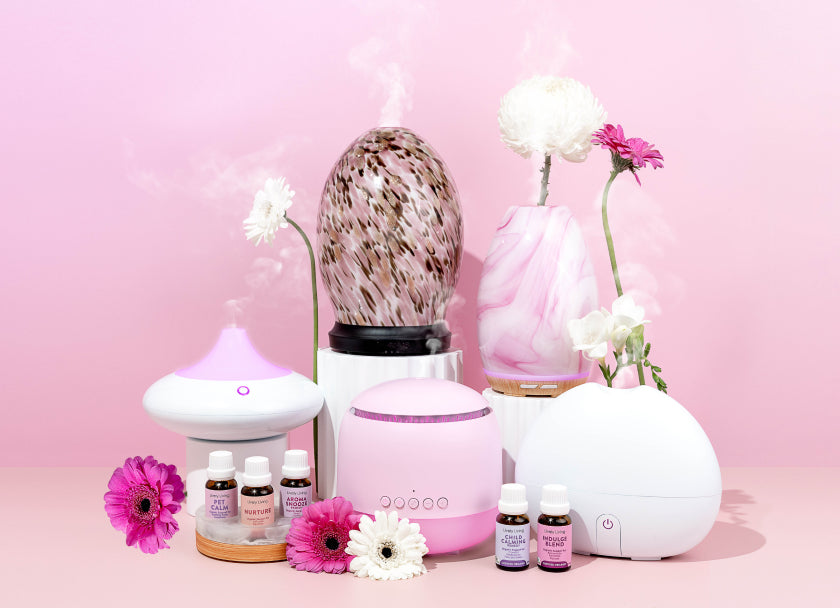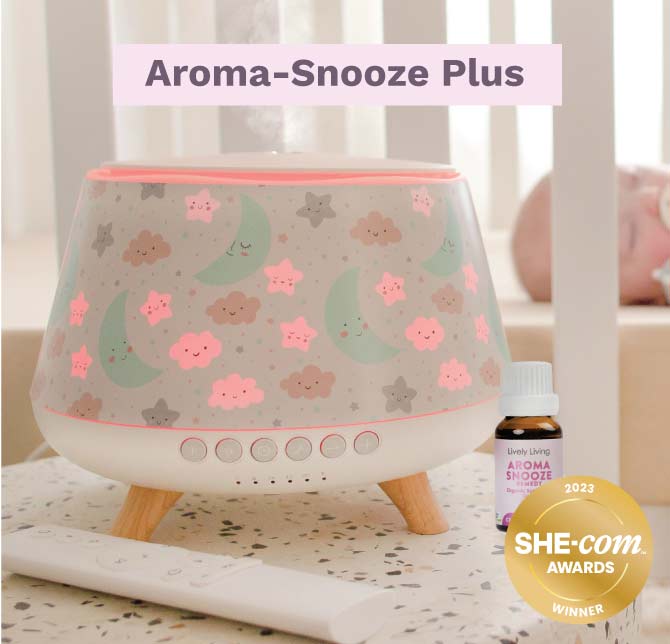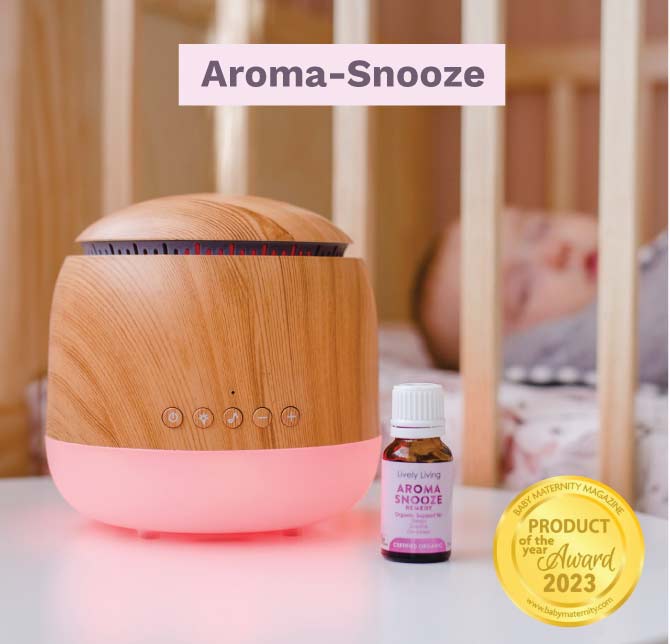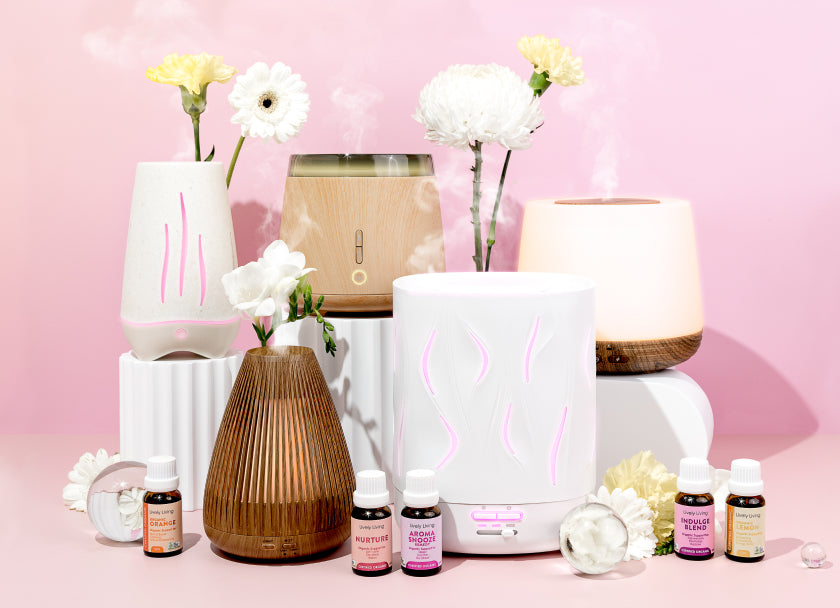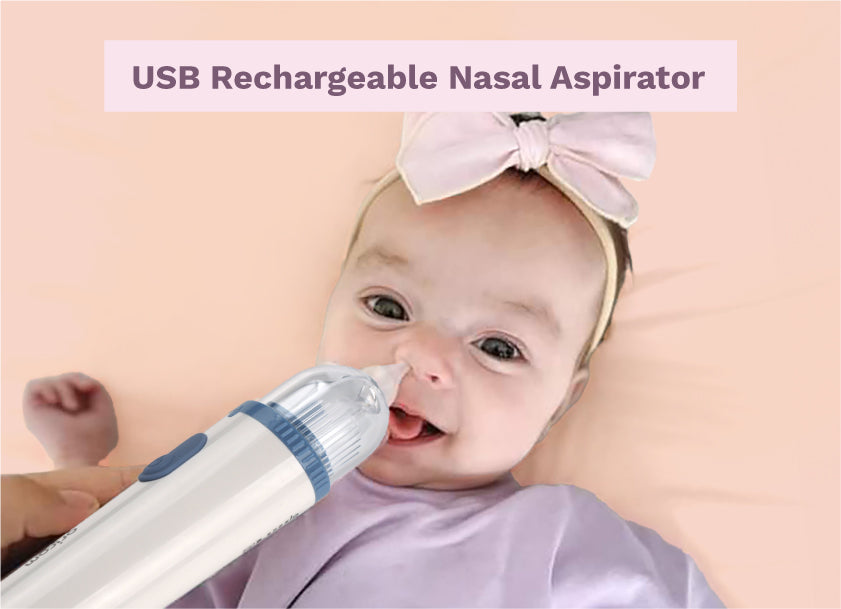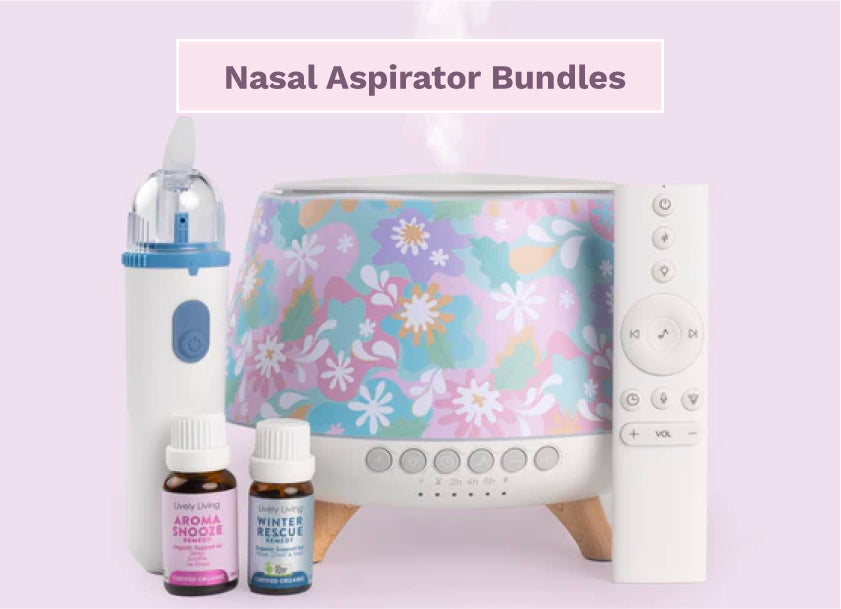Will a Humidifier Help a Congested Baby?
Babies with congestion can be distressing for parents. You might wonder if a humidifier can help your little one breathe easier. Will a humidifier help a congested baby? Let's explore this common question and find out how these devices might benefit your baby's health.
Table Of Contents:
- Understanding Baby Congestion
- How Humidifiers Work
- Will a Humidifier Help a Congested Baby?
- How to Use a Humidifier Safely for Your Baby
- Other Ways to Help a Congested Baby
- When to See a Doctor
- Choosing the Right Humidifier for Your Baby
- Conclusion
Understanding Baby Congestion
Baby congestion, often presenting as a stuffy nose or noisy breathing, is a frequent issue for infants. It happens when mucus builds up in the nasal passages, the small airways in the baby's nose. This blockage can make it difficult for your baby to breathe comfortably, especially since babies primarily breathe through their noses.
Difficulty breathing can interfere with feeding, as babies need to coordinate sucking, swallowing, and breathing. It can also disrupt sleep, making your baby fussy and tired. Understanding the potential causes helps in finding the right approach to ease congestion.
Congestion in babies stems from various factors. The common cold is a frequent culprit, leading to inflammation and increased mucus production. Other causes include viruses like the respiratory syncytial virus (RSV), allergies (less common in very young infants but possible), or simple irritation from dry air or pollutants.
Sometimes, newborn congestion isn't due to illness but rather leftover amniotic fluid or the adjustment to breathing air after birth. It's important to distinguish between mild stuffiness and a more serious respiratory issue. Paying attention to your baby's symptoms is crucial.
How Humidifiers Work
Humidifiers are devices designed for adding moisture back into the air. They operate by converting water stored in a reservoir into water vapor or a fine mist. This humidified air is then dispersed into the room, increasing the overall humidity level.
Dry air, especially common during dry winter months or in homes with heating systems, can irritate nasal passages and airways. This irritation can worsen congestion or make throats feel scratchy. By counteracting this dry air, humidifiers help maintain moisture in the delicate lining of the nose and throat.
Maintaining optimal humidity levels indoors is part of a healthy lifestyle, particularly for infants whose respiratory systems are still developing. The added moisture helps soothe inflamed airways and thin mucus secretions. This process makes it easier for the body to clear congestion naturally.
Types of Humidifiers
Several types of humidifiers are available, each using a different method to create moisture. The main categories include cool mist and warm mist humidifiers. Within these categories, further distinctions exist based on the technology used.
Common types include:
- Cool Mist Humidifiers: These disperse room-temperature mist. They are generally considered the safest option for children's rooms because they don't use boiling water, eliminating the risk of burns.
- Warm Mist Humidifiers: These use a heating element to heat water and release warm steam. While some find the warm mist soothing, the presence of hot water poses a burn risk, making them less ideal for use around young children.
- Ultrasonic Humidifiers: Available in both cool and warm mist versions, these use high-frequency sound vibrations to break water into a fine mist. They are typically very quiet but may disperse minerals from tap water into the air (white dust) if not used with distilled water.
- Evaporative Humidifiers: These use a fan to blow air through a wet wick or filter, causing the water to evaporate into the air. They are generally self-regulating (won't over-humidify) and don't produce white dust, but require regular filter replacement or cleaning.
The American Academy of Pediatrics specifically recommends using a cool-mist humidifier in children's rooms. This avoids the danger associated with hot water or steam produced by warm mist models. Safety should always be the priority when choosing any device for your baby's room.
Here's a quick comparison:
| Humidifier Type | Pros | Cons | Safety Notes |
|---|---|---|---|
| Cool Mist (Evaporative) | No burn risk, often affordable, less likely to over-humidify. | Requires filter cleaning/replacement, can be noisier due to fan. | Considered very safe for babies. |
| Cool Mist (Ultrasonic) | Very quiet, no filter typically needed. | Can create white dust if using tap water, potential for bacteria dispersal if not cleaned meticulously. | Safe regarding burns; use distilled water. |
| Warm Mist | May feel more soothing to some, boils water which may kill some germs. | Significant burn risk from hot water and steam. Uses more electricity. | Generally NOT recommended for babies/children due to burn hazard. |
Will a Humidifier Help a Congested Baby?
So, back to the main question: will a humidifier help a congested baby? Yes, adding moisture to the air with a humidifier can significantly help ease congestion symptoms in infants. While not a cure for the underlying cause (like a cold), it addresses the discomfort associated with a stuffy nose.
Humidified air primarily helps by thinning the thick mucus lodged in your baby's nasal passages. When mucus is thinner, it's easier for your baby to clear it, either by sneezing, coughing, or with gentle help from saline drops and a nasal aspirator. Clearing the nasal passages leads to more comfortable breathing.
Furthermore, dry air can exacerbate irritation in the nose and throat, potentially leading to a sore throat or even nosebleeds. A humidifier counteracts this by keeping these delicate tissues moist and comfortable. This can make your baby feel better overall while recovering from their congestion.
Benefits of Using a Humidifier for Your Baby
Employing a cool-mist humidifier in your baby's room offers several advantages, especially when they have nasal congestion:
- Easier Breathing: Moist air helps thin mucus, making it easier for your baby to clear their nasal passages and breathe without obstruction. This is particularly helpful during sleep and feeding.
- Better Sleep: Congestion often worsens at night, disrupting sleep for both baby and parents. By easing breathing difficulties, a humidifier can contribute to longer, more restful sleep. Promoting conditions where your baby can sleep safely is essential.
- Reduced Irritation: Humidified air soothes irritated nasal passages and throats, reducing discomfort from dry winter air or illness. This can lessen coughing triggered by dryness.
- Preventing Nosebleeds: Dry air can cause the delicate lining of the baby's nose to crack and bleed. Maintaining adequate humidity helps prevent this.
- Comfort During Illness: When dealing with a common cold or other respiratory ailments, keeping the air moist helps your baby feel more comfortable while their body fights the infection.
Research suggests potential broader benefits too. A study referenced by respected sources like the journal Pediatrics indicated that maintaining certain humidity levels can decrease the viability of flu viruses on surfaces and in the air. While not a guaranteed preventative, it highlights how indoor air quality impacts health.
How to Use a Humidifier Safely for Your Baby
Using a humidifier can bring relief, but safe operation is absolutely essential to prevent potential problems. Improper use or maintenance can lead to the dispersal of bacteria or mold, potentially harming your baby's respiratory health. Follow these guidelines for baby safe humidifier use:
- Clean It Daily and Weekly: Empty the water reservoir daily, wipe it dry, and refill with fresh water. Allowing water to sit promotes bacteria growth. Perform a more thorough cleaning every few days (or at least weekly) according to the manufacturer's instructions, often involving descaling with vinegar or disinfecting with a diluted bleach solution followed by thorough rinsing.
- Use Distilled or Demineralized Water: Tap water contains minerals that can be released as white dust by ultrasonic humidifiers, potentially irritating airways. Minerals can also build up inside the machine, encouraging bacteria growth. Using distilled water minimizes these risks.
- Monitor Humidity Levels: Aim for indoor humidity between 30% and 50%. Too little humidity offers no benefit, while too much can promote mold, mildew, and dust mite growth, triggering allergies or asthma. Use a separate hygrometer to monitor humidity accurately if your humidifier doesn't have one built-in.
- Place it Safely: Position the humidifier on a flat, stable surface at least a few feet away from the crib and out of your baby's reach. Ensure the cord is tucked away safely to prevent tripping or pulling hazards. Do not place it directly next to walls or furniture where moisture can accumulate.
- Avoid Additives (Usually): Do not add essential oils, inhalants, or vapor rubs (like Vicks VapoRub) directly into the water reservoir of most humidifiers unless specifically stated as safe by the manufacturer. These substances can irritate a baby's delicate lungs when aerosolized or damage the humidifier unit. Consult a medical professional before using any medicated vapors around an infant.
- Change Filters Regularly: If using an evaporative humidifier, follow the manufacturer's recommendations for changing the air filter or wick. A dirty filter can harbor mold and bacteria. Let components air dry completely after cleaning.
Think of the humidifier as a tool requiring care, much like any other appliance in your home. Regular maintenance is vital for it to be beneficial rather than detrimental. Always check the instructions specific to your model.
Other Ways to Help a Congested Baby
A cool mist humidifier is a helpful tool, but it's often most effective when combined with other simple home care measures to ease congestion. Consider these additional strategies to help make your baby comfortable:
- Saline Drops or Spray: Use preservative-free saline drops (saltwater) to moisten and loosen mucus in the baby's nose. Apply a few drops in each nostril a few minutes before feeding, sleeping, or using a nasal aspirator. These are readily available over-the-counter.
- Nasal Aspirator: After using saline drops, gently clear the loosened mucus using a bulb syringe or a suction device (like a NoseFrida). Be gentle and don't suction too frequently, as this can irritate the nasal lining. Effective nasal clearing can provide immediate relief.
- Keep Baby Hydrated: Ensure your baby receives adequate fluids (breast milk or formula). Proper hydration helps keep mucus thin and easier to clear.
- Elevate the Head (Safely): For babies older than one year, a thin pillow might be considered. For infants, never place pillows or loose bedding in the crib due to the risk of suffocation and sudden infant death syndrome (SIDS). Instead, you can slightly elevate the head of the entire crib mattress by placing a thin, tightly rolled towel underneath the mattress at the head end, ensuring adherence to safe sleep guidelines. Consult your pediatrician about this method first.
- Steam Exposure: Create a steamy bathroom by running a hot shower with the door closed. Sit with your baby in the steamy room (not directly in the hot water) for 10-15 minutes. The warm, moist air can help loosen mucus.
- Avoid Irritants: Keep your baby away from cigarette smoke, strong perfumes, aerosols, pet dander, and dust, as these can worsen nasal congestion. Ensure good ventilation in your home.
Combining these approaches provides a multi-faceted strategy to tackle that stuffy nose. Always consult with your primary care provider or pediatrician before trying new treatments, especially for a young infant. Some resources also offer symptom checker tools online, but these cannot replace professional medical advice.
When to See a Doctor
While most baby congestion is mild and resolves with home care, certain signs warrant prompt medical attention. Contact your pediatrician or seek urgent care if your baby exhibits any of the following symptoms:
- Difficulty Breathing: Look for rapid breathing, flaring nostrils, wheezing, grunting sounds with each breath, or chest retractions (skin pulling in around the ribs or neck).
- Signs of Dehydration: Fewer wet diapers than usual (less than 6 in 24 hours), dry mouth, sunken soft spot (fontanelle) on the head, or excessive sleepiness.
- High Fever: Any rectal temperature of 100.4°F (38°C) or higher in an infant under 3 months needs immediate medical evaluation. For older babies, consult your doctor about fever guidelines.
- Poor Feeding: If congestion significantly interferes with feeding and your baby is taking less than half their usual amount or refusing to feed.
- Blue Tinge: Any bluish discoloration around the lips, face, or fingernails (cyanosis) indicates a lack of oxygen and requires emergency attention.
- Worsening Symptoms: If congestion doesn't improve after several days or seems to be getting worse.
- Extreme Irritability or Lethargy: If your baby is unusually fussy and cannot be consoled, or is overly sleepy and difficult to wake.
These symptoms could indicate a more serious illness, such as bronchiolitis (often caused by respiratory syncytial virus or RSV), pneumonia, or another infection requiring treatment. Trust your instincts; if you're worried about your baby's breathing or overall condition, don't hesitate to request appointment with medical professionals. Seeking timely care is important for your baby's well-being.
Choosing the Right Humidifier for Your Baby
Selecting the best cool-mist humidifier for your baby's room involves considering several practical aspects. Look beyond just the basic function of adding moisture to the air. Think about features that promote safety, ease of use, and effectiveness.
Key factors include:
- Room Size: Choose a humidifier rated for the square footage of your baby's room. A unit too small won't be effective, while one too large might lead to excessive humidity if not monitored.
- Ease of Cleaning: This is paramount for safety. Look for models with wide tank openings and easily accessible parts. Some water reservoir designs are simpler to clean than others, reducing the risk of bacteria growth.
- Noise Level: Ultrasonic humidifiers are generally quieter than evaporative models with fans. Consider a quieter unit if noise might disturb your baby's sleep.
- Automatic Shut-off: A safety feature that turns the unit off when the water reservoir is empty is highly recommended. This prevents the motor from running dry.
- Adjustable Mist Output/Humidistat: Allows you to control the amount of mist released and maintain the desired humidity level (ideally 30-50%). Some units have built-in humidistats that automatically adjust output or shut off when the target level is reached.
- Filter Requirements: Evaporative models require filter replacements, adding to ongoing costs. Filterless ultrasonic models avoid this but necessitate using distilled water to prevent white dust. Weigh the pros and cons based on convenience and budget.
- Tank Capacity & Runtime: Consider how long the humidifier can run on a single tank filling. A larger tank might mean less frequent refilling, especially overnight.
- Budget and Price Transparency: Humidifiers range widely in price. Set a budget and compare features within that range. Reputable retailers offer price transparency.
Reading reviews and checking recommendations from trusted sources can also be helpful. Ensure the product meets safety standards for use in a child's room. Remember that even the best humidifier needs diligent cleaning to be truly baby safe.
For additional information on health topics, resources like the Mayo Clinic website can be valuable, often including detailed articles and sometimes even a symptom checker. Many healthcare providers and organizations also maintain informative websites; look for features like a site map or accessibility statement, which indicate a well-structured site. Always check their privacy policy regarding how data, like information potentially gathered through cookies collect processes, is handled.
Conclusion
So, will a humidifier help a congested baby? Yes, in most situations, a cool mist humidifier is a beneficial tool for alleviating the discomfort of nasal congestion in infants. By adding essential moisture to the air, it helps thin mucus, soothe irritated nasal passages and throats, and promote easier breathing, which can lead to better sleep and feeding for your baby.
Remember that a humidifier is part of a supportive care strategy, not a cure. Consistent and correct cleaning is vital to prevent the dispersal of germs or mold. Combine its use with other gentle methods like saline drops and nasal suctioning, ensure safe sleep practices, and always monitor your baby for any signs of worsening illness that require attention from a medical professional.
If you have ongoing concerns or need guidance, reach out to your pediatrician or primary care provider. They can offer personalized advice and support. For families facing challenges, sometimes support groups or information on financial assistance can be found through healthcare networks or community resources; check for nondiscrimination notice information as well. Ultimately, keeping your baby comfortable and breathing easier during bouts of congestion is achievable with the right approach and care.

